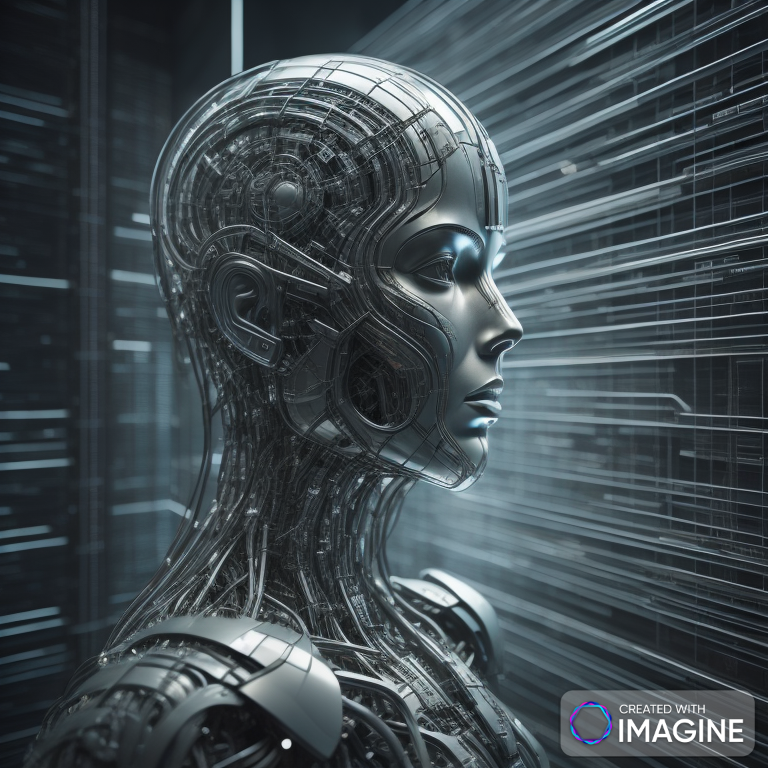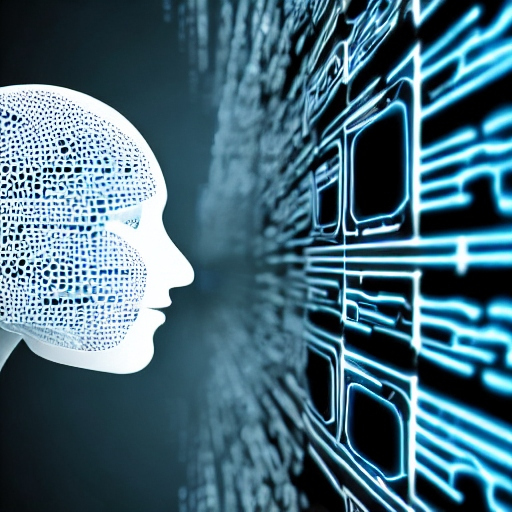Introduction: Computational Intelligence (CI) stands at the forefront of modern technology, driving advancements in artificial intelligence and paving the way for intelligent agents capable of complex decision-making. In this blog post, we’ll delve into the essence of Computational Intelligence, exploring its principles, applications, and the intriguing world of intelligent agents.
Understanding Computational Intelligence: At its core, Computational Intelligence involves the development of algorithms and models inspired by natural intelligence. It encompasses a diverse set of techniques that enable machines to emulate cognitive functions, learning from data, adapting to changing environments, and solving intricate problems.
Key Components of Computational Intelligence:
- Evolutionary Computation:
- Mimics the process of natural selection to evolve solutions to complex problems.
- Genetic algorithms, genetic programming, and evolutionary strategies are prominent examples.
- Fuzzy Systems:
- Deals with uncertainty and imprecision in data.
- Utilizes linguistic variables and rule-based systems to handle vague information.
- Neural Networks:
- Modeled after the human brain’s neural structure.
- Deep learning, a subset of neural networks, has revolutionized tasks like image recognition and natural language processing.
Intelligent Agents: The crux of Computational Intelligence lies in the creation of intelligent agents. An intelligent agent is an entity that perceives its environment, processes information, and takes actions to achieve specific goals. These agents exhibit characteristics such as autonomy, adaptability, and the ability to learn from experience.
Applications of Computational Intelligence:
- Machine Learning:
- CI algorithms power machine learning models, enabling systems to learn and improve performance over time.
- Applications range from predictive analytics to recommendation systems.
- Robotics:
- Intelligent agents in robotics leverage CI to navigate environments, make decisions, and interact with objects.
- Data Mining:
- CI techniques uncover patterns and insights from vast datasets, aiding in decision-making and knowledge discovery.
- Natural Language Processing (NLP):
- CI contributes to NLP tasks like sentiment analysis, language translation, and chatbot interactions.
Challenges in Computational Intelligence:
- Interpretable Models:
- One of the ongoing challenges in CI is the interpretability of complex models. As algorithms become more intricate, understanding the decision-making process becomes crucial, especially in critical applications like healthcare and finance.
- Ethical Considerations:
- The use of CI in decision-making raises ethical concerns. Ensuring that intelligent agents adhere to ethical standards, avoid biases, and prioritize fairness is an evolving area of research.
- Real-time Adaptability:
- Achieving real-time adaptability in intelligent agents is a challenge. In dynamic environments, systems must swiftly adapt to changes, requiring algorithms that can continuously learn and update their knowledge.
- Security and Robustness:
- Security remains a significant concern. Adversarial attacks can exploit vulnerabilities in CI systems. Developing robust algorithms resistant to malicious manipulation is an ongoing research focus.
**Advancements in Computational Intelligence:
- Explainable AI (XAI):
- Explainable AI aims to enhance the transparency of CI models, providing insights into how decisions are reached. This is crucial for gaining trust in AI systems, particularly in fields where decisions impact human lives.
- Continual Learning:
- Traditional machine learning models often require retraining when faced with new data. Continual learning in CI focuses on systems that can adapt and learn incrementally, allowing for lifelong learning without extensive retraining.
- Hybrid Approaches:
- Combining CI techniques with other emerging technologies, such as quantum computing or edge computing, holds promise. Hybrid models may leverage the strengths of different approaches to tackle complex problems more efficiently.
- Neuro-Symbolic Integration:
- Integrating symbolic reasoning with neural networks is an area gaining traction. This approach aims to combine the strengths of classical symbolic AI, which excels in logical reasoning, with the pattern recognition capabilities of neural networks.
**Impact of Computational Intelligence in Industry:
- Automotive Industry:
- CI plays a pivotal role in autonomous vehicles, enabling them to perceive the environment, make real-time decisions, and navigate safely.
- Healthcare:
- In healthcare, CI is utilized for personalized medicine, disease prediction, and medical image analysis. Intelligent agents contribute to diagnosing diseases and recommending personalized treatment plans.
- Finance:
- CI algorithms power financial models for risk assessment, fraud detection, and algorithmic trading. The ability to analyze vast datasets in real-time enhances decision-making in financial institutions.
- Smart Cities:
- CI is instrumental in creating smart city solutions. From optimizing traffic flow to managing energy consumption, intelligent agents contribute to building more sustainable and efficient urban environments.
**Future Trends:
- Edge Computing Integration:
- The integration of CI with edge computing allows for processing data closer to the source, reducing latency and enhancing real-time decision-making, a crucial aspect for applications like IoT devices.
- Explainable Quantum Computing:
- As quantum computing advances, efforts are directed towards developing explainable quantum algorithms, ensuring transparency in the decision-making process of quantum-enhanced intelligent agents.
- Human-AI Collaboration:
- The future envisions a closer collaboration between humans and AI systems. CI models that understand and respond to human intentions in natural language will be pivotal in facilitating this collaboration.
- Sustainable AI:
- Research in creating energy-efficient CI models aligns with the global push for sustainable technologies. Sustainable AI ensures that intelligent systems operate efficiently while minimizing environmental impact.
Extended Applications of Computational Intelligence:
- Natural Language Processing (NLP) Advancements:
- In CI, NLP has seen remarkable strides, enabling machines to understand, interpret, and generate human-like language. Sentiment analysis, chatbots, and language translation are notable applications.
- Swarm Intelligence:
- Inspired by the collective behavior of social insects, swarm intelligence involves algorithms that mimic decentralized, self-organized systems. Ant Colony Optimization and Particle Swarm Optimization are examples used in optimization problems.
- Affective Computing:
- CI is making inroads into understanding and responding to human emotions through affective computing. This has implications in human-computer interaction, adaptive learning systems, and mental health applications.
- Explainable AI in Healthcare:
- In healthcare, the push for explainable AI is critical. CI models must provide clear justifications for diagnoses and treatment recommendations to build trust among healthcare professionals and patients.
- Robotics and Autonomous Systems:
- CI is fundamental in robotics, contributing to the development of autonomous systems capable of decision-making in dynamic environments. From self-driving cars to drones, intelligent agents powered by CI enhance adaptability.
- Education and Personalized Learning:
- CI is transforming education by facilitating personalized learning experiences. Adaptive learning platforms use intelligent algorithms to tailor educational content based on individual student progress and preferences.
**Key Research Areas in Computational Intelligence:
- Neuromorphic Computing:
- Inspired by the human brain, neuromorphic computing aims to build systems that mimic neural architectures. This area explores the development of hardware and algorithms for more efficient and brain-like computation.
- Transfer Learning in CI:
- Transfer learning involves leveraging knowledge gained from one task to improve performance on a different, but related, task. In CI, transfer learning is a crucial area for enhancing the efficiency of intelligent systems.
- Evolutionary Computation:
- Evolutionary algorithms, a subset of CI, simulate the process of natural selection to find optimal solutions. Ongoing research focuses on improving the efficiency and scalability of evolutionary computation methods.
- Quantum Machine Learning:
- As quantum computing evolves, researchers are exploring its intersection with machine learning. Quantum machine learning algorithms have the potential to outperform classical counterparts in specific tasks.
**Emerging Challenges and Considerations:
- Bias and Fairness in CI:
- Addressing bias in CI models is a growing concern. Researchers are actively working on developing algorithms that are more fair and unbiased, particularly in applications like hiring processes and loan approvals.
- Energy-Efficient Computing:
- The energy consumption of large-scale CI models is a challenge. Sustainable solutions, including the development of energy-efficient algorithms and hardware, are critical for the long-term viability of CI.
- Edge AI:
- Edge AI involves deploying intelligent systems closer to the data source, reducing the need for centralized processing. Challenges include ensuring security, scalability, and efficient utilization of resources in edge computing environments.
**Real-world Success Stories:
- Drug Discovery and Healthcare:
- CI has played a pivotal role in drug discovery by predicting potential drug candidates and understanding complex biological interactions. This accelerates the drug development process and reduces costs.
- Supply Chain Optimization:
- CI algorithms contribute to optimizing supply chain operations, from demand forecasting to logistics management. This leads to more efficient resource allocation and reduced operational costs for businesses.
- Smart Grids and Energy Management:
- CI is employed in designing smart grids to manage energy distribution more effectively. Predictive analytics and optimization algorithms enhance the reliability and efficiency of energy systems.
- Personalized Recommendations:
- E-commerce platforms and streaming services utilize CI for personalized recommendations. Algorithms analyze user behavior and preferences to offer tailored suggestions, enhancing user experience and engagement.
Advanced Techniques and Mathematical Foundations:
- Fuzzy Logic Systems:
- Mathematical Foundation:
- Fuzzy logic employs degrees of truth to handle uncertainty. It uses linguistic variables and membership functions. For example, if �x is a linguistic variable representing temperature, fuzzy sets like “Cold,” “Warm,” and “Hot” are defined with membership functions.
- Algorithmic Insight:
- Fuzzy inference systems utilize rules to make decisions in uncertain or imprecise environments. Mamdani and Sugeno models are two popular types.
- Mathematical Foundation:
- Genetic Algorithms:
- Mathematical Foundation:
- Genetic algorithms are inspired by natural selection. They involve the evolution of a population of potential solutions using operations such as selection, crossover, and mutation. The fitness function guides the optimization process.
- Algorithmic Insight:
- A basic genetic algorithm involves the initialization of a population, selection of parents based on fitness, crossover to create offspring, mutation for diversity, and replacement of the old population with the new one.
- Mathematical Foundation:
- Neural Networks and Backpropagation:
- Mathematical Foundation:
- Neural networks are composed of interconnected nodes with weights representing the strength of connections. The mathematical foundation involves activation functions, weighted sums, and backpropagation for error minimization.
- Algorithmic Insight:
- Backpropagation is a crucial algorithm for training neural networks. It adjusts weights based on the gradient of the error with respect to the weights, enabling the network to learn from training data.
- Mathematical Foundation:
- Particle Swarm Optimization (PSO):
- Mathematical Foundation:
- PSO is inspired by the social behavior of birds and fish. Each potential solution is a “particle” in the solution space. The position and velocity of particles are updated over iterations.
- Algorithmic Insight:
- PSO involves particles adjusting their positions based on their own best-known position and the best-known position in the entire swarm. This social interaction helps converge towards optimal solutions.
- Mathematical Foundation:
Emerging Trends and Future Directions:
- Explainable AI (XAI):
- Importance:
- As AI systems become more complex, the need for understanding and interpreting their decisions grows. XAI aims to make AI systems transparent and interpretable, addressing the “black box” challenge.
- Methods:
- LIME (Local Interpretable Model-agnostic Explanations) and SHAP (SHapley Additive exPlanations) are methods used for explaining the predictions of complex models.
- Importance:
- Reinforcement Learning (RL) Advances:
- Mathematical Framework:
- RL involves an agent learning to make decisions by interacting with an environment. The mathematical framework includes state representations, action spaces, rewards, and policy optimization.
- Applications:
- Deep Reinforcement Learning (DRL) combines RL with deep neural networks. AlphaGo, a program that defeated human champions in the game of Go, is a prominent example.
- Mathematical Framework:
- Evolutionary Strategies (ES):
- Mathematical Formulation:
- ES is an optimization technique that perturbs a population of candidate solutions. The mathematical formulation involves mutation and recombination operators.
- Applications:
- ES is applied in training neural networks and optimizing complex, high-dimensional functions.
- Mathematical Formulation:
Concrete Examples and Use Cases:
- Algorithmic Trading with Genetic Algorithms:
- Genetic algorithms are employed in financial markets for algorithmic trading. They evolve trading strategies based on historical market data, adapting to changing market conditions.
- Medical Diagnosis Using Fuzzy Logic:
- Fuzzy logic systems are utilized in medical diagnosis where conditions are often vague. Membership functions help model the uncertainty associated with symptoms and test results.
- Robotics Path Planning with PSO:
- PSO is applied in robotics for path planning. Swarm optimization helps robots navigate through complex environments by finding optimal paths.
- Deep Learning in Image Recognition:
- Neural networks, particularly deep learning architectures like Convolutional Neural Networks (CNNs), excel in image recognition tasks. They learn hierarchical features from images, enabling accurate classification.
Challenges and Future Directions: While CI has achieved remarkable milestones, challenges persist. Addressing ethical concerns, ensuring transparency in decision-making, and enhancing the interpretability of complex models are ongoing endeavors. The future of CI holds promise with advancements in explainable AI, continual learning, and the fusion of CI with other cutting-edge technologies.
Conclusion: Computational Intelligence stands as a testament to humanity’s quest to create intelligent systems that can navigate the complexities of our world. From enhancing everyday applications to pushing the boundaries of what machines can achieve, CI is a driving force propelling us into a future where intelligent agents seamlessly integrate into our lives.
In the grand tapestry of technology, Computational Intelligence emerges as a vibrant thread, weaving together innovation, learning, and the relentless pursuit of creating machines that truly understand and respond to the world around them.







